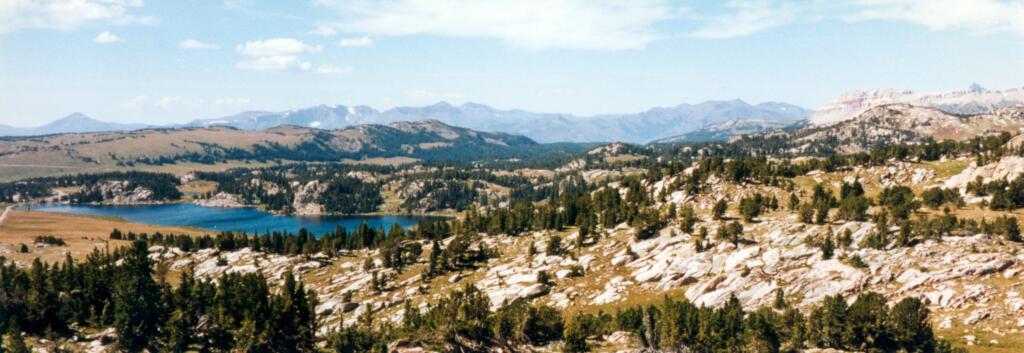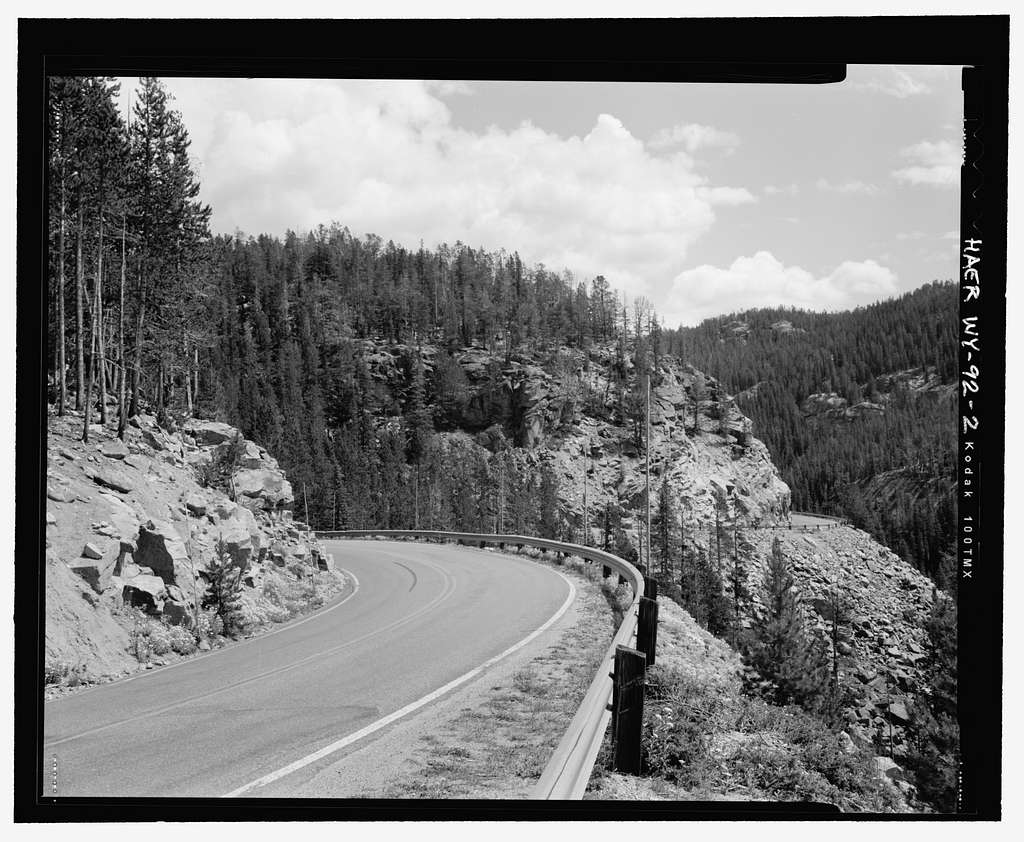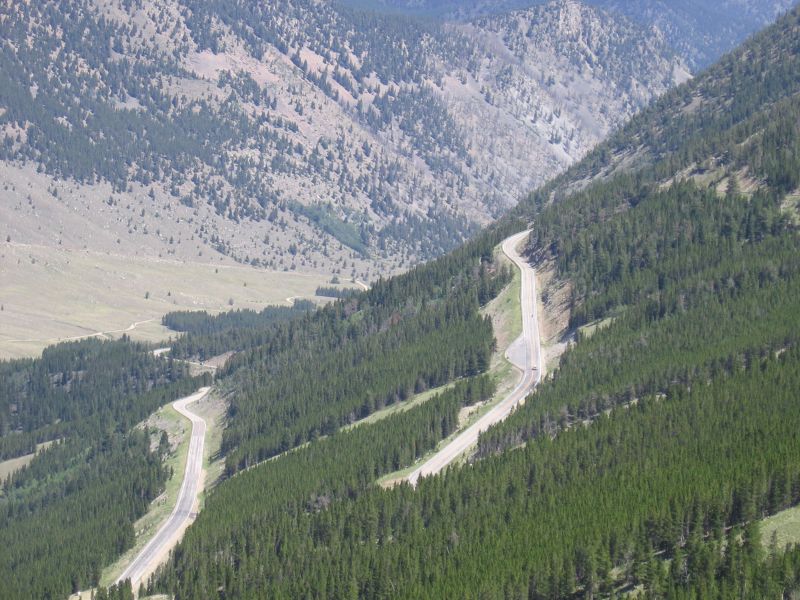Route Guide: Beartooth Highway
We were inspired by our most recent Alaskan Life feature to dive deeper into America’s iconic roads—stretches of highway as scenic as they are historic. For our first feature, we’re exploring the Beartooth Highway, a 68-mile byway connecting Red Lodge, Montana, to Yellowstone National Park’s Northeast Entrance. Recently mentioned by our customer Jim, who traversed this route during a 22-day, 7,200-mile journey in his Alaskan Camper, the Beartooth Highway is more than just a road; it’s an adventure waiting to be discovered. If you’d like to read Jim’s full story, check out our write-up here, otherwise let’s jump into the Beartooth Highway and help plan your next itinerary.
Dubbed “the most beautiful drive in America,” the Beartooth Highway winds through the rugged Absaroka and Beartooth Mountains, climbing to an awe-inspiring 10,947 feet at Beartooth Pass. This iconic route offers alpine lakes, sweeping tundra, and breathtaking vistas, making it much more than a way to get from point A to point B—it’s a drive that lingers in your memory long after it’s over. Whether you start in Red Lodge or near Yellowstone’s Northeast Entrance, the highway’s dramatic landscapes and rich history promise an unforgettable experience.

A Brief History
Completed in 1936, the Beartooth Highway traces a route first traveled by Native Americans and later by explorers like General Philip Sheridan, who used it in 1872 as a shortcut between Yellowstone and Red Lodge. The highway’s construction in the 1930s was a monumental engineering achievement, conquering extreme terrain with steep switchbacks, narrow ridges, and high-altitude tundra through innovative methods such as hand-carved rock embankments and precision blasting through granite peaks. Designed to connect communities and boost tourism, it symbolized progress in a region once isolated by its rugged geography. Now designated a National Scenic Byway, the highway stands as a testament to human ingenuity, offering breathtaking vistas and access to some of the most remote alpine landscapes in the United States. For a deeper dive into the Beartooth Highway’s rich history, start with maps and insights from the Cooke City Visitor Center or the Beartooth Ranger District Office. Explore exhibits at the Carbon County Historical Society and Museum in Red Lodge, or pick up Jon Axline’s The Beartooth Highway: A History of America’s Most Beautiful Drive. Feeling really bold? Take the drive yourself and let the story unfold through the audiobook version—okay, that might be too much.

Times to Visit
The Beartooth Highway is best explored between late May and mid-October when the road is generally open and accessible. However, its high elevation and unpredictable weather can lead to temporary closures even during these months, as seen in 2023 when the highway closed for the winter on October 10. Early summer showcases snow-capped vistas and vibrant wildflower blooms, while late summer and fall bring milder temperatures and stunning foliage. Rapidly changing conditions, including sudden snow flurries or rain showers, are common at high elevations, so travelers should come prepared with layers and check current road conditions with the Montana and Wyoming Departments of Transportation. For the best experience, plan your drive during the early morning or late afternoon hours to enjoy ideal lighting and fewer crowds at popular viewpoints like Beartooth Pass and Pilot and Index Peaks Overlook.
Things to Look Out For
Travelers should keep a few key considerations in mind to ensure a safe and enjoyable trip. Fuel up in Red Lodge or Cooke City, as gas stations along the route are scarce. The drive’s steep grades and tight switchbacks demand caution, particularly for RVs or trailers (but perfectly suited for an Alaskan Camper—just saying), so take your time and use pullouts to let faster vehicles pass. Bring essentials like water, snacks, and a physical map since cell service is unreliable. Allow plenty of extra time for spontaneous stops—whether it’s for capturing a stunning view, spotting wildlife, or exploring a trail. Above all, stay flexible and prepared for the unpredictable weather that adds to the unique charm of this iconic byway.

Things to Do and See
Lake Creek Falls
Tucked along the Beartooth Highway about 49 miles from Red Lodge, Lake Creek Falls is one of those spots you might drive right past if you’re not paying attention. It’s unmarked but unmistakable once you find it. Park near the historic bridge—originally built in the 1930s—and take a short stroll to see the falls tumbling through the rocky gorge below. The old bridge itself, bypassed in 1974, is a piece of history and offers the best vantage point for the cascade. This quiet stop is perfect for stretching your legs and eating a quick snack before getting back on the road.
Crazy Creek Falls
Sticking with the waterfalls, about 15 miles from Yellowstone’s Northeast Entrance, Crazy Creek Falls is a quick detour with big rewards. Park across from Crazy Creek Campground and take the short, shaded hike to the falls. The cascading water tumbling over rocky ledges is a photographer’s dream and adventurous visitors can climb higher for a top-down view of the falls—just watch your footing, as the rocks can be slippery. For those with more time, the trail extends to Crazy Lakes and Ivy Lake, offering a serene escape and stunning alpine scenery.
Pilot and Index Peaks Overlook
About 24 miles from Yellowstone’s Northeast Entrance, the overlook for Pilot and Index Peaks is a must-see. These sharp, iconic peaks stand out against the sky, and the spacious pullout makes it easy to stop and take in the view. A number of signs share interesting details about the peaks and the surrounding wilderness, so it’s a great spot to learn something while you’re snapping photos. Wildlife sightings are common, so keep your eyes peeled for mountain goats or soaring eagles. Pro tip: The lighting here is particularly good in the early morning or late afternoon.
Clay Butte Lookout
A short 2.6-mile detour from the main highway on Forest Road 142 brings you to the Clay Butte Lookout, about 45 miles from Red Lodge. The drive up is rugged but worth it for the 360-degree views at the top—just be prepared for those 7-point turns that we all despise at dead-ends. A nuisance in an Alaskan, nearly impossible in a fifth wheel. The fire tower, built in the 1940s, now serves as a museum with exhibits on local geology, wildlife, and fire history. On a clear day, you can see for miles—alpine lakes, dense forests, and craggy peaks.
Beartooth Lake
About 40 miles from Red Lodge, Beartooth Lake is one of those spots you’ll want to set aside some time for. Tucked under the dramatic backdrop of Beartooth Butte, it’s a great place to stretch your legs and enjoy the mountain air. If you like to fish, bring your gear—this lake is known for trout, and you can cast a line right from the shore. There’s also a solid picnic area with tables, so pack some snacks and settle in. Feeling adventurous? Hit one of the trails nearby for even more alpine views. And if you’ve got the time, the campground is a quiet spot to crash for the night and wake up ready to explore more.
Beartooth Pass
At 10,947 feet, Beartooth Pass is the kind of place that makes you pull over and say, “Wow.” About 30 miles from Red Lodge, getting there is half the fun—hairpin turns, sheer drop-offs, and views that make you forget how tight your grip is on the wheel. When you finally hit the summit, it’s like stepping into another world. Think snow in July, sweeping views of peaks and glaciers, and tundra that feels like it’s straight out of a nature documentary. Bring a jacket because it gets chilly up there.
 Quick FAQs
Quick FAQs
When is the Beartooth Highway open?
The highway typically opens from late May to mid-October, weather permitting.
How long does it take to drive the highway?
Without stops, it takes about 2-3 hours. However, to fully enjoy the sights, allow at least 4-6 hours.
Are there places to stay along the route?
Lodging options include Red Lodge, Cooke City, and the Top of the World Resort. Camping is also available at sites like Beartooth Lake and Island Lake.
What makes the Beartooth Highway unique?
Its unparalleled alpine scenery, high-altitude tundra, and proximity to Yellowstone make it a must-visit destination for nature lovers.
Where to next . . .
The Beartooth Highway isn’t just a road—it’s a rite of passage for anyone who loves adventure, history, and drop-dead gorgeous views. With its high-altitude switchbacks and jaw-dropping scenery, it’s the kind of drive that sticks with you long after the dust has settled on your tires.
But why stop there? Let’s keep the road trip rolling. How about a cruise down Route 66, where you can chase neon signs, snack on roadside pie, and soak up a big slice of Americana? Or take the Pacific Coast Highway, where every turn feels like a postcard with its ocean cliffs and salty breeze. Then there’s the Blue Ridge Parkway, a laid-back ride through rolling Appalachian hills with views that’ll make you want to park the car and just sit for a while.
Stick with us as we explore these classic highways. Who knows, you might just find your next great adventure (and maybe a new favorite place to find a good slice of lemon meringue).
